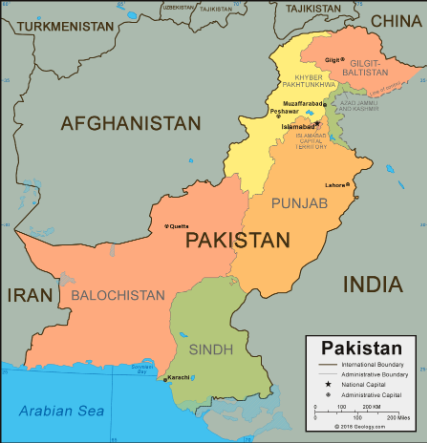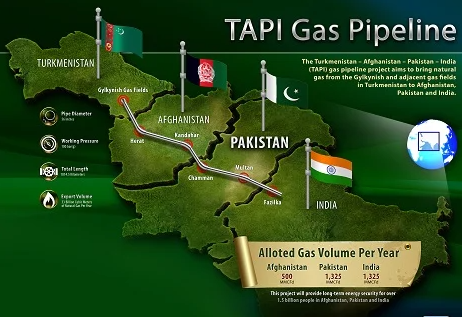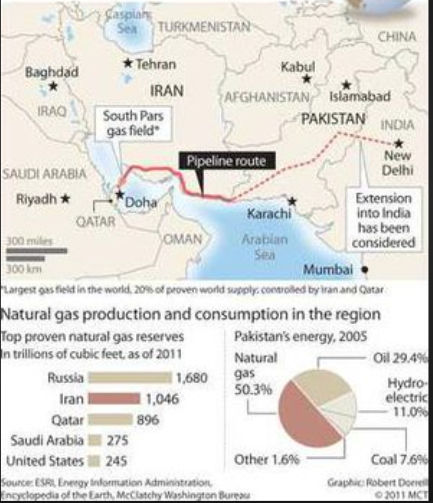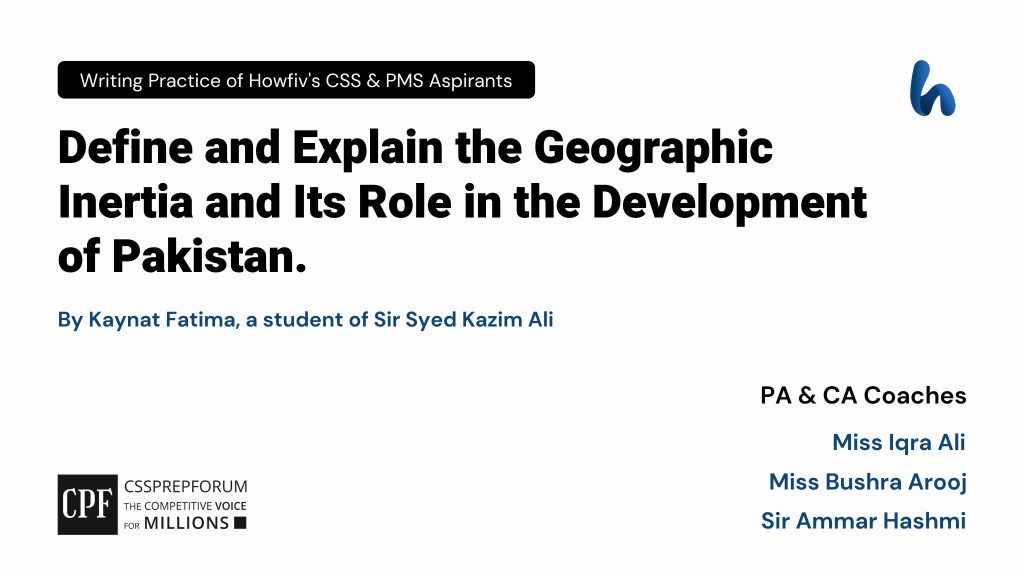CSS Pakistan Affairs | Geographic Inertia and Pakistan
The following question of CSS Pakistan Affairs is solved by Kaynat Fatima under the supervision of Howfiv’s Pakistan Affairs Coaches. She learnt how to attempt 20 marks question and essay writing from Sir Syed Kazim Ali, Pakistan’s best CSS and PMS English essay and precis teacher with the highest success rate of his students. This solved past paper question is attempted on the pattern taught by Sir to his students, scoring the highest marks in compulsory and optional subjects for years, and uploaded to help aspirants understand how to crack a topic or question, how to write relevantly, what coherence is, and how to include and connect ideas, opinions, and suggestions to score the maximum.

Outline
1-Introduction
2-Understanding the term of geographic inertia
3-The geographic importance of Pakistan because of its topography, location, climate, coastline, and water resources
4-Pakistan’s role of Geographical Inertia in development
- ✓Transportation route for Central Asian Republicans(CARS)
- Evidence: Landlocked countries’ CARs access to the global market through Pakistan’s ports, roads, and railways. i.e., Afghanistan-Pakistan Transit Trade Agreement (APTTA), CASA, TAPI, etc.
- ✓Shortest route with gas-rich countries
- Evidence: The Iran-Pakistan gas pipeline project, the Peace Pipeline
- ✓Direct free trade potential
- Evidence: There is free trade potential with neighbouring countries like India, Afghanistan, Iran, and Afghanistan border-sharing countries, as well as with China, which has the most significant consumer market.
- ✓Deep warm water port in Pakistan
- Evidence: A project like CPEC is the cornerstone that enhances Pakistan’s economy and trade through Gwadar port.
5-Suggestions for leveraging Geographic Inertia for development
- ✓To enhance connectivity and trade through Infrastructure Investment
- ✓To strengthen economic ties, enhance energy security, and foster stability in South Asia by Regional Cooperation
- ✓To take into account the long-term implications of geographic factors through Policy Formulation
6-Critical analysis
7-Conclusion

Answer to the Question
Introduction
Geographical inertia plays an essential role in the development of a country globally. Verily, a country’s location can be a game changer for its social, economic, and political development. Similarly, Pakistan has unique geographical inertia because of its geostrategic location, and its development is tied to its geographical features, and its economic, social, and political development depends on its geographical inertia. Essential to this uniqueness is geographic inertia, where the permanent influence of geographical factors leads the path of a nation’s development over time. Furthermore, the geographic inertia in Pakistan’s development plays different roles, such as a transit route and trade hub for the landlocked countries, direct free trade potential because of its border-sharing neighbours, most accessible and shortest route to gas-rich neighbours, deep warm water Gwadar port, and strategic partner in regional initiatives. Thus, policymakers and the government must sit together and formulate long-term and effective policies to bring development through geographical inertia and take advantage of Pakistan’s unique geography. Thus, this question draws an attention to the significance of geographic inertia in Pakistan’s development, as well as the geographic importance of Pakistan because of its strategic location, topography, variable climate, extensive coastline, and abundant water resources. It also sheds light on its social, cultural, political, and economic development through its geography.
Understanding the concept of geographic inertia
Understanding the concept of geographical inertia, it is mandatory to learn the concept of interia first. So, inertia is a physics concept by Newton in his work First Law of Motion, which means that an object will remain in its current state of motion, at rest or in unchanging motion, unless acted on by some external force, which means a property that has a tendency not to move or change. Hence, the geographic inertia of a country means the static geographical position of a country. Many factors are included in the geographical inertia of Pakistan, including location, topography, border sharing with other countries, climate, and natural resources. These factors highlight the profound and lasting impact of a country’s physical geography on its social, economic, and political developmental journey.
The geographic importance of Pakistan because of its topography, location, climate, coastline, and water resources

Exploring the importance, Pakistan is geographically important because of its strategic location in the centre of South Asia, Central Asia, and the Middle East, situated approximately between 24° and 37° North latitude and 61° and 75° East longitude. Border sharing with India to the east is called the line of control, Afghanistan and Iran to the west is called the Durand line, China to the north Sino-Pak, and a maritime boundary with the Arabian Sea in the South. In the north, Pakistan has mountain ranges, such as the Himalayas and the Karakoram, which are fertile land, so Pakistan is an agricultural country. This unique topography influences agricultural practices, trade routes for landlocked countries, settlement patterns, and infrastructure development. Pakistan experiences a different range of climates. Indian Ocean shore is 1,046 kilometres, giving access to the sea route for trade and supporting fisheries business. Moreover, it is full of natural and mineral resources. Thus, Pakistan’s geography is significant for its social, economic, and political development.
Pakistan’s role of Geographical Inertia in development
- ✓Transportation route for Central Asian Republicans(CARS)

First, Pakistan’s geographic inertia has significantly shaped its social, economic and political development through its strategic location and natural resources as a transit route for Central Asian countries. Any improvements in the monetary, political, or social spaces anyplace in the area have gigantic implications for Pakistan. The reliance on the states stimulates the need to foster dynamic strategy and significant political and financial relations. Similarly, Pakistan and Central Asia look to fabricate and advance substantial geo-economic and geo-political connections to upgrade provincial networks and success. While South Asia has a vast market for worldwide investors, Central Asia is wealthy in natural resources, energy assets, hydrocarbons, coal, gas, petrol, and more. Its geological area complements its joint effort with the adjoining states, particularly with Pakistan. Central Asia Republicans are landlocked countries. Pakistan provides these countries access through various trade corridors like the Afghanistan-Pakistan Transit Trade Agreement (APTTA). Nevertheless, Pak-CAR bilateral projects are the most important, like energy projects, such as the (TAPI)Turkmenistan-Afghanistan-Pakistan-India gas pipeline and Central Asia South Asia (CASA)-1000. The CASA-1000 is probably going to be functional in 2024. For the last two or three years, Pakistan and Central Asian states have been participating in open gateways through suitable strategies that will give a valuable and secure environment for trans-territorial trade and network. Regional cooperation and cohesion are essential for the country’s growth, and the European Union’s regional collaboration has played a critical role in the region’s development.
- ✓Shortest route with gas-rich countries

Second, Iran is the 2nd largest reserve of gas, 17.8% of the world’s gas resources are found in Iran. It is a contiguous country with long common borders with Pakistan. Both countries have long-standing commitments to the Pak-Iran gas pipeline. Iran is the gas-rich neighbour of Pakistan, which can provide the shortest route of gas to Pakistan and enhance economic and geopolitical development. Energy is considered the country’s lifeline because it is used in commercial, domestic, and industrial sectors. Pakistan is not prosperous regarding natural gas reserves that can be enough for the country’s needs. The Iran-Pakistan Gas Pipeline, which is famous as the Peace Pipeline, is a means of energy survival for the country. Pakistan is the most viable option for this country due to its shared borders with Iran financially and geographically. The project will be beneficial in terms of sufficient gas reserves in Iran, and the overall cost of the project and the price of gas will also be reasonable. Peace Gas Pipeline gives off the impression of being the most suitable and least expensive choice. In about 15 months, this pipeline can ease pressure on Pakistan’s energy shortages and replace the use of expensive furnace oil for power generation. A gas flow of 21.5 million cubic meters daily will have multiple positive gains for Pakistan’s economy. A gas stream of 21.5 million cubic meters daily will positively increase Pakistan’s economy. Furthermore, we have not understood the advantages of territorial exchange, ventures, and financial networks. Our business sectors for anything we produce are in far-off places through the structure of local associations. At a two-sided level, we want to move towards Iran, India, and Afghanistan and through Afghanistan to central Asia. This area will be the centre of monetary development and success for 50 years. We shouldn’t botch any open door that opens up for us.
- ✓Direct free trade potential

Moreover, Pakistan’s direct free trade potential is evident in its long land border with India, Afghanistan, Iran, and China, one of its largest trading partners. Despite political tensions, trade between the neighbouring countries continues, highlighting the economic benefits of geographical proximity. Additionally, Pakistan’s strategic location provides it with direct access to consumer markets in India and China, which can emerge as a significant trading partner and investor in Pakistan’s projects. The world’s most important trade and strategic block, the European Union, comprises 27 countries, which has improved the standard of living and economic well-being of the masses of the incumbent countries through significant interaction in trade and political affairs. Similarly, there is huge trade potential between South Asian countries, such as India, as it is host to the second-largest Asian economy, which has a closed border with most other South Asian countries. Due to various strategic, demographic, and consumer benefits, it is the need of the hour to promote regional trade in South Asia. Pakistan should implement Free Trade Agreements (FTAs) individually with the concerned countries as there is huge trade potential between Pakistan and other South Asian countries. There are various reasons for the FTA with India. India is the fastest growing economy in the world, and in 2024 become the world’s 5th largest economy. However, on the Eastern front, in terms of trade with Iran, Pakistan has vast potential to import oil and gas and export processed and value-added industrial items to Iran. As for Afghanistan, Pakistan is the largest trading partner to Afghanistan; however, there is potential to increase the exports further, which are mainly coming from India and Iran. Pakistan is to understand its capability to turn into a regional economic centre point by creating economic passageways, which can be fruitful grounds for speculations and potentially open doors, including job creation. Hence, Pakistan can help to harmonize standards within the region to increase cross-border trade. With around 220 million individuals and an essential area at the intersection of South, Central, and West Asia, Pakistan can become a territorial financial hub.
- ✓Deep warm water port in Pakistan
Lastly, the port of Gwadar is a warm water port in Pakistan and has arisen as an important crossroads in the entwining financial quests for China and Pakistan. The port’s part in the China-Pakistan Economic Corridor (CPEC) supports connectivity, exchange enhancement, and energy security for China while encouraging financial development and improvement for Pakistan. Its pivotal role in CPEC underscores the two nations’ profound economic and geopolitical interdependence. It is a vital passage for global energy supplies that has drawn the attention of China and Pakistan. Gwadar port is significant for China; China can import energy through this port, which is the shortest port, and along with it, can lessen the riskier voyage through the Strait of Malacca. CPEC is considered a game changer for Pakistan because many projects, such as infrastructure projects, highways, and railways, exist. This shows the geostrategic importance of the Gwadar for both countries. It is an alternative route for China and its trade activities. The port’s trade development between China, Pakistan, and the Middle East allowed China to diversify its trade routes and deliver goods in shorter periods than maritime passages. Moreover, this port can have opportunities for transhipment, boosting regional trade volumes. Gwadar Port has the potential to enhance the Pakistan economy by creating jobs, creating special economic zones, attracting foreign investment, and promoting international trade. The development of Pakistan, which is associated with the construction of infrastructure, such as roads and railways, improves Pakistan’s internal and neighbouring connectivity. Thus, this could lead to economic growth and development, particularly in less-developed regions of the country.
Suggestions for leveraging Geographic Inertia for development
- ✓To enhance connectivity and trade through Infrastructure Investment
First, Pakistan should enhance connectivity and trade through Infrastructure Investment. Pakistan is an economic hub and should invest in infrastructure to benefit from it. Due to its strategic location, Pakistan has a free trade potential. Pakistan should gain benefits like the EU through investing in its infrastructure.
- ✓To strengthen economic ties, enhance energy security, and foster stability in South Asia by Regional Cooperation
Second, Pakistan should strengthen economic ties, enhance energy security, and foster stability in South Asia through Regional Cooperation. Pakistan is the heart of Asia. Pakistan should strengthen economic ties with neighbouring countries to ensure energy security and resolve border issues with neighbouring countries to foster stability in South Asia through the cooperation of the region.
- ✓To take into account the long-term implications of geographic factors through Policy Formulation
Third, Pakistan should consider the long-term implications of geographical factors through Policy Formulation. Pakistan’s government should make long-term geographical policies, and long-term ministers should be appointed that would benefit Pakistan’s social, economic, and political development, like the ministers of India.
Critical Analysis
Critically, Pakistan is important because of the role of geographic inertia in its social, economic and political development. Pakistan is the gateway to Central Asia and is rich in natural resources, which is an opportunity for Pakistan to achieve economic growth and development. Pakistan should also take advantage of other opportunities for development, such as the CPEC. Moreover, Pakistan should focus on the importance of geographical inertia. The nation shares long borders with neighbouring countries and has the potential of free trade, like NAFTA and the North American Free Trade Agreement, to get economic benefits. Furthermore, through the development of Gwadar Port Pakistan, it would have the capacity to sustain its debt. Thus, it can be said that Pakistan is a country rich in natural resources with the geographical inertia to enhance its social, economic, and political development.
Conclusion
In conclusion, Pakistan’s development is shaped by its geographic inertia. Its strategic location, natural resources, climate, and abundance of agricultural land contribute to its social, economic, and political development, connectivity, and importance in the region. Moreover, the geographic inertia in Pakistan’s development plays different roles, such as a transit route and trade hub for the landlocked countries, direct free trade potential because of its border-sharing neighbours, most accessible and shortest route to gas-rich neighbours, deep warm water Gwadar port and strategic partner in regional initiatives. Thus, policymakers and the government must sit together and formulate long-term and effective policies to bring development through geographical inertia and take advantage of Pakistan’s unique geography.

CSS Solved Past Papers’ Essays
Looking for the last ten years of CSS and PMS Solved Essays and want to know how Sir Kazim’s students write and score the highest marks in the essays’ papers? Then, click on the CSS Solved Essays to start reading them.
CSS Solved Essays
CSS Solved General Science & Ability Past Papers
Want to read the last ten years’ General Science & Ability Solved Past Papers to learn how to attempt them and to score high? Let’s click on the link below to read them all freely. All past papers have been solved by Miss Iqra Ali & Dr Nishat Baloch, Pakistan’s top CSS GSA coach having the highest score of their students. General Science & Ability Solved Past Papers












